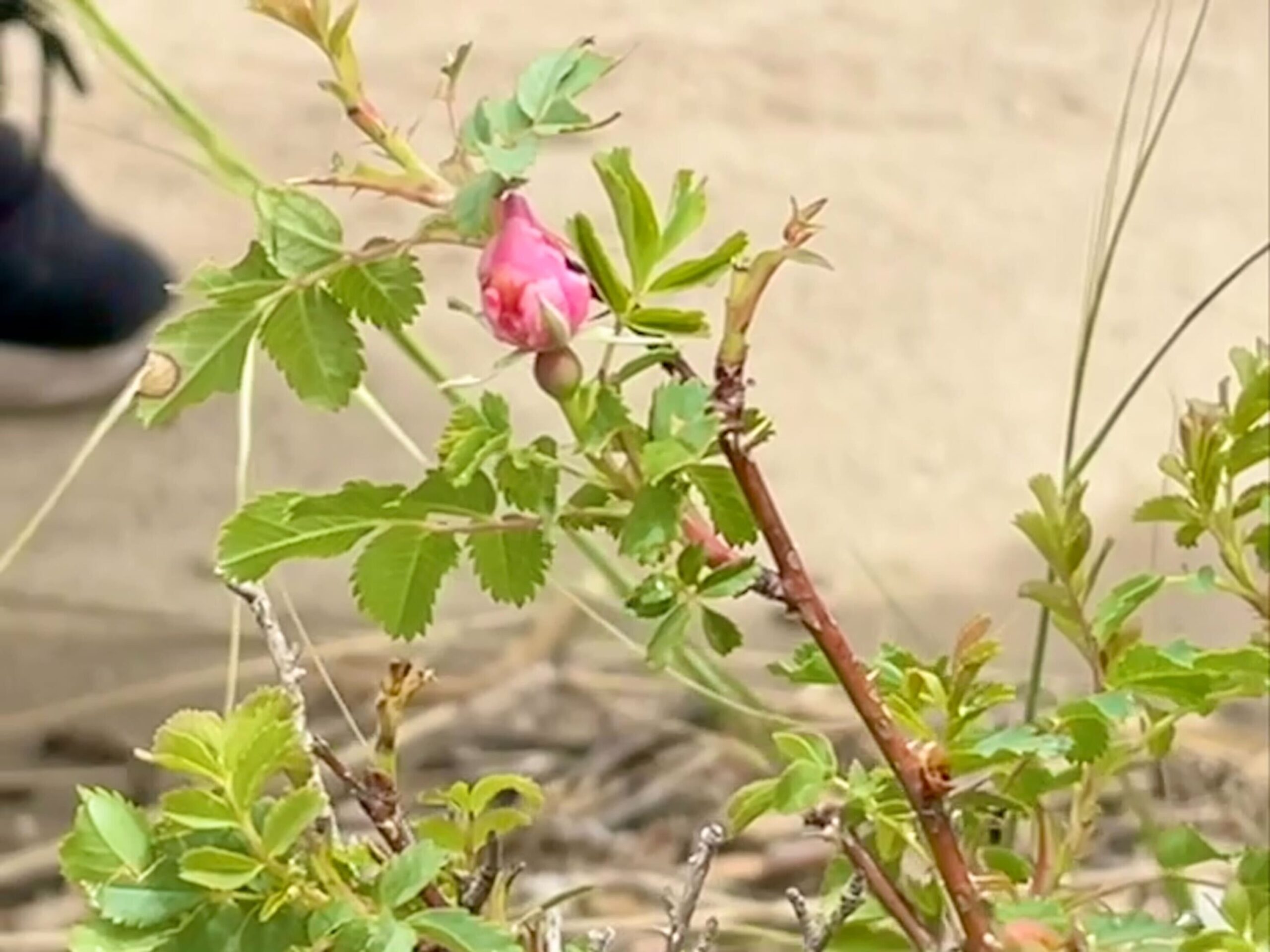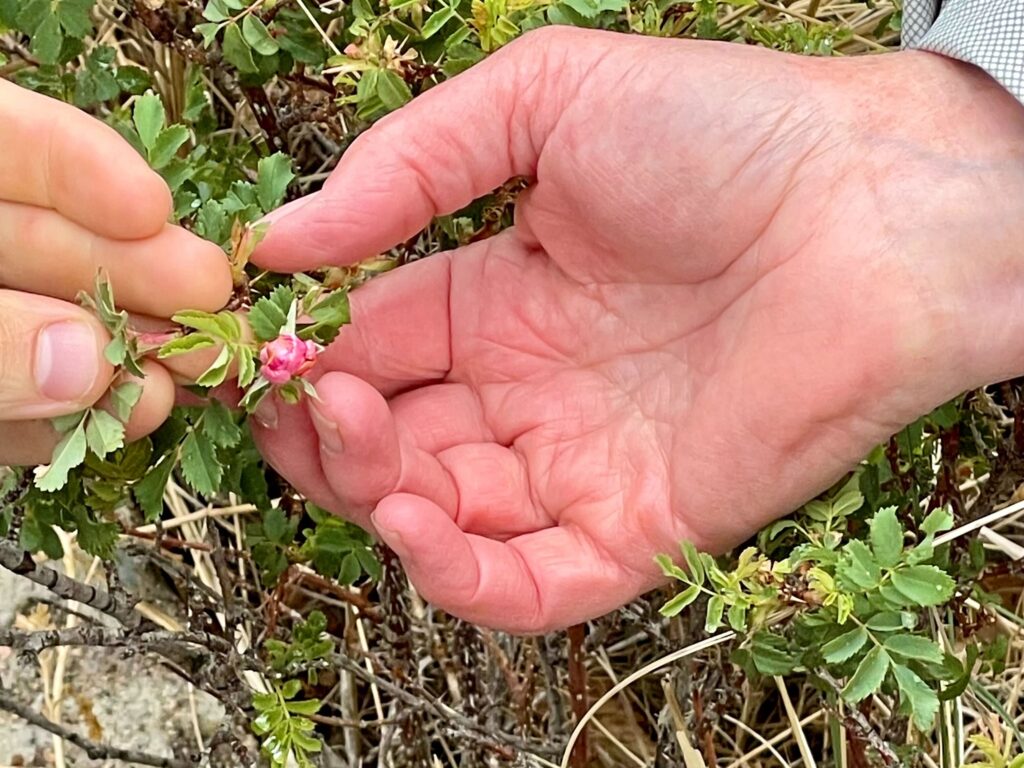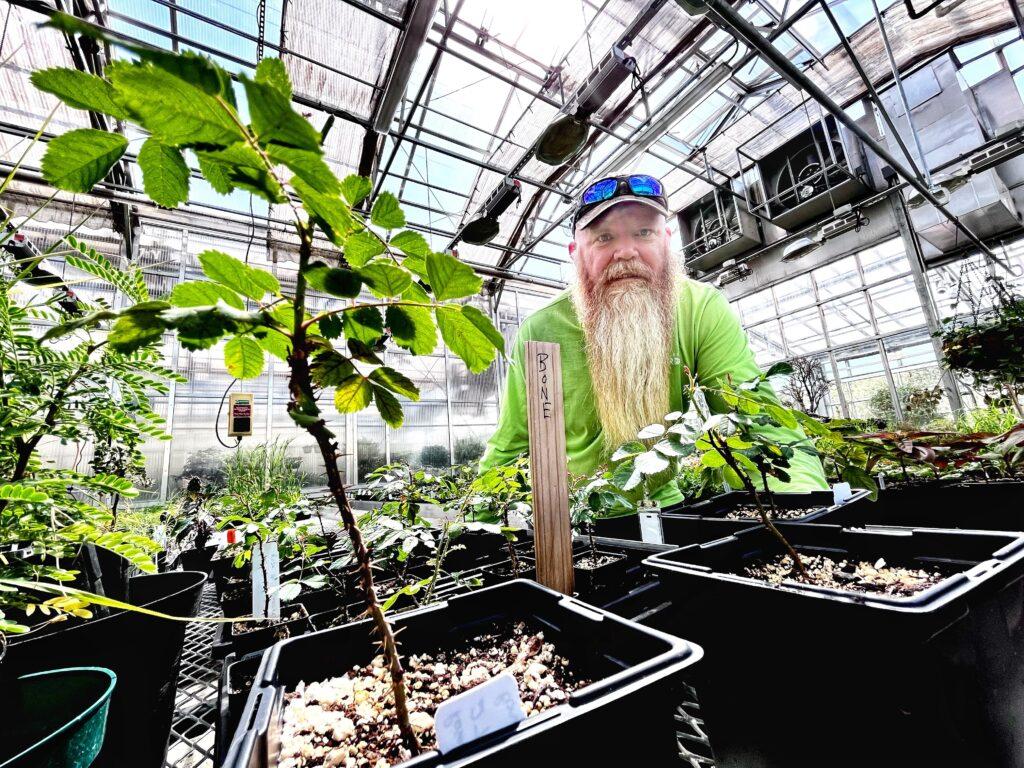
A rose bush no one has seen flower in nearly 80 years has produced a lone pink bud in southeastern Colorado. Archaeologist Bonnie Clark was among the first to see it Saturday as survivors, descendants, and local officials took part in an annual pilgrimage to Colorado’s Camp Amache.
“Oh my God!” Clark exclaimed in a video of the sighting.
“That’s what a little rain will do for you,” added Mike Reynolds, of The National Park Service.
During World War Two, the US government incarcerated more than 10,000 Japanese-Americans at Amache, formally known as The Granada Relocation Center, which just became a National Historic Site. And it is believed Amacheans were the ones to originally plant and care for the roses during their incarceration.

On Saturday, a commemoration had just wrapped up at the camp’s cemetery when Clark and others drove over to check on the bush.
“We all looked down and there is a teeny tiny, lovely, delicate pink bud on that Amache rose,” Clark expounded. Until that moment, no one knew what color the flowers would be. The center of the rose might still hold a surprise.
Camp Amache was not necessarily where people expected to see the first bud. Last fall, horticulturists from Denver Botanic Gardens traveled to southeastern Colorado and took clippings from the rose bush. They have been babying them in a Denver greenhouse ever since. It was thought that a bloom would come as a result of that highly-controlled environment.
Clark theorizes the hearty bramble at Amache finally budded precisely because cuttings were taken.
“The folks from the botanic gardens came and pruned that rose. That helped the living part, the heart, of that rose be more healthy.”
Shortly after seeing the bud, Clark emailed a photo to Amache survivor Carlene Tanagoshi Tinker, who lives in Fresno, California. She was three years old when she and her parents were sent to the camp. The family was held there for three years.
“If you believe in miracles, this is a miracle,” Tanagoshi Tinker said. “These witness roses are saying ‘welcome home pilgrims.’”
Meanwhile, Tinker awaits the blossoming of her own Amache roses. The Denver Botanic Gardens helped deliver several clippings to her, which are thriving in her backyard.
Some plant detective work to be done
While the mystery of their color has mostly been answered, there is still horticultural detective work to do, according to Clark.
“[The blossom] will help us get an idea maybe of the species of the rose, and knowing the species of the rose will help us know a little bit of where it came from,” Clark said. “Is it the kind of rose that somebody could have bought at a nursery? Is it the kind of rose that somebody brought seeds with them from California?”
Most Amacheans came from the West Coast when President Franklin Roosevelt signed Order 9066.
Many of these questions will be answered as the cuttings continue to grow at The Denver Botanic Gardens, some of which will be planted in the steppe garden this summer.









